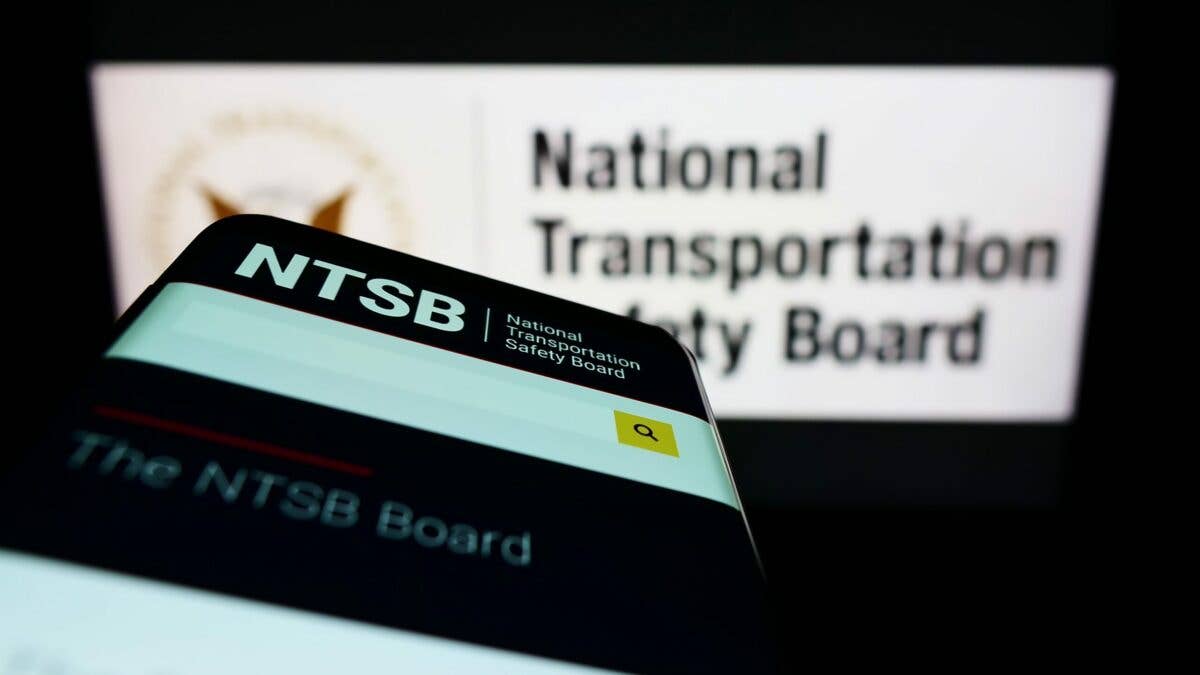NTSB Investigates Boeing Rudder Malfunction Incident in Newark
The NTSB has released its findings after an apparent rudder pedal malfunctioned on a Boeing 737-8 in February at Newark Liberty International Airport.

The National Transportation Safety Board has released its initial assessment of a reported rudder malfunction of a Boeing 737-800 at Newark Liberty International Airport last month. [Credit: Shutterstock]
The National Transportation Safety Board (NTSB) has released the preliminary report into the investigation of an apparent rudder pedal malfunction on a Boeing 737-8 in February at Newark Liberty International Airport (KEWR).
As the rudders are a flight control system, federal regulations require the NTSB be notified in the event of a malfunction. According to the report, the servo that activates the rudders may have been adversely impacted by the cold.
What Happened
According to the report, the jet operated as United Airlines Flight 1539 had flown from Lynden Pindling International Airport (MYNN) in Nassau, Bahamas, to KEWR in New Jersey. Shortly after touchdown the captain who was pilot flying noted the rudder pedals "did not move in response to the 'normal' application of foot pressure while attempting to maintain the runway centerline. The pedals remained 'stuck' in their neutral position."
The captain used the nosewheel steering tiller to keep the aircraft near the centerline during the rollout as the aircraft slowed. The steering tiller is controlled by hand and used in the relatively tight quarters of the ramp.
Per the NTSB, the captain asked the first officer to check the function of his rudder pedals. The first officer reported his pedals were not responding, however, the captain then noted that shortly thereafter the rudder pedals began to operate normally.
The issue was reported to airline maintenance, and the aircraft removed for service.
The flight data recorder, which records aircraft performance data, corroborated the pilot’s statements regarding the malfunction of the rudder system. The data showed that during the landing and subsequent rollout the rudder surface position remained near its neutral position even though the force applied to the rudder pedals was increasing.
The NTSB noted that "about 30 seconds after touchdown, a significant pedal force input was observed along with corresponding rudder surface movement. Afterward, the rudder pedals and rudder surface began moving as commanded and continued to function normally for the remainder of the taxi."
The investigation involved the FAA, United Airlines (UAL), Boeing, and Collins Aerospace. It was noted in the report that the post-incident troubleshooting and inspection of the rudder control system found no obvious malfunctions with it or any of its components whose failure would have resulted in the restricted movement observed during Flight 1539 and the subsequent test flight that followed the event.
"As a precaution, the aft rudder input torque tube and associated upper and lower bearings and the rudder rollout guidance servo were removed for further examination by the NTSB systems group," the report said.
Following the removal of the rudder system components, UAL conducted a second test flight on the airplane and found the rudder control system operated normally.
Component Details
According to the information gathered by the NTSB, "pilot control of the 737-8 rudder is transmitted in a closed-loop system from the pilots’ rudder pedals in the cockpit through a single cable system, aft rudder quadrant, pedal force transducer to the aft rudder input torque tube in the vertical fin. Rotation of the torque tube provides the command inputs to the two main and standby rudder power control units (PCUs) to move the rudder surface."
The incident airplane was delivered to the airline in February 2023. The aircraft was configured with "a rudder SVO-730 rollout guidance servo that was disabled per UAL’s delivery requirements to reconfigure the autoflight system from CAT IIIB to CAT IIIA capability."
Investigators stated that although the servo was disabled, it remained mechanically connected to the upper portion of the aft rudder input torque tube by the servo’s output crank arm and pushrod. The rollout guidance servo was removed from the incident airplane and subjected to cold soaking to determine if the cold had adversely affected the torque required to move the servo’s output crank arm.
Per the report, at room temperature it was found that the torque to rotate the servo’s output crank arm was within design specifications.
After the unit was then “cold soaked” for one hour and the test was repeated, it was found that the torque to move the servo’s output crank arm was significantly beyond the specified design limits.
"Because the servo output crank arm is mechanically connected to the rudder input torque tube, the restricted movement of the servo’s output crank arm would prevent the rudder pedals from moving as observed during Flight 1539 and the test flight," the report said.
The reported rudder malfunction happened approximately a month after an Alaska Airlines Boeing 737-9 Max lost a door plug during climbout from Portland International Airport (KPDX) in Oregon. No one was injured, however, the incident led to the grounding of the aircraft. Boeing has been under intense scrutiny from the FAA and NTSB since the event, with both agencies focusing on the manufacturer's safety culture.
"We appreciate the NTSB’s work on this preliminary report and will continue to fully support their investigation," a Boeing spokesperson told FLYING. “We worked closely with United Airlines to diagnose the rudder response issue observed during two 737-8 flights in early February. With coordination with United, the issue was successfully resolved with the replacement of three parts, and the airplane returned to service last month.”
The NTSB noted the report is still preliminary, and the information may change as the investigation continues.

Subscribe to Our Newsletter
Get the latest FLYING stories delivered directly to your inbox






